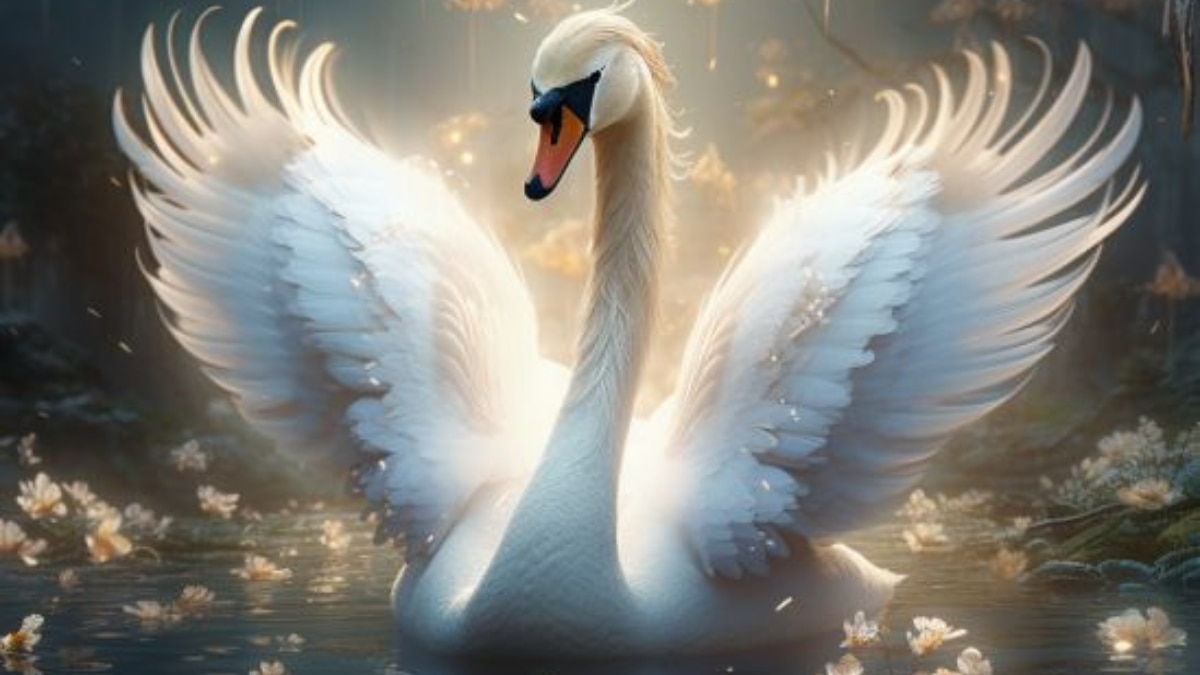10 Ancient Indian Tales Featuring Animals
Through these stories, animal characters impart moral lessons on principles such as honesty, perseverance, intelligence, and the repercussions of deceit.

Animals have long been central to ancient Indian tales, each having distinct virtues and cultural values. Through these stories, animal characters impart moral lessons on principles such as honesty, perseverance, intelligence, and the repercussions of deceit. These fables use the behaviours and traits of animals to illustrate timeless wisdom and ethical teachings, reflecting the rich tradition of storytelling in Hindu culture.
Here are 10 ancient Indian tales featuring animals which give us important morals:
ALSO READ: Matthew Perry Death: Two Doctors Among Five Charged In Connection To Friends Actor's Death
1. The Hare And The Tortoise:

In this classic fable, a boastful hare mocks the slow-moving tortoise, claiming that no one could ever beat him in a race. The tortoise, undeterred by the hare's arrogance, accepts the challenge.
The race begins, and the hare, confident of his swift speed, quickly leaves the tortoise far behind. Believing he has plenty of time left to finish the race, he decides to take a nap. Meanwhile, the tortoise continues to move steadily and slowly, without stopping. As the hare sleeps, the tortoise passes him and reaches the finish line first. When the hare wakes up and realises his mistake, he rushes to the finish line but arrives too late.
The story concludes with the lesson that persistence and consistent effort often triumph over arrogance and overconfidence.
2. The Story Of The Deer And The Sage:

In ancient India, a deer once sought refuge in a sage's hermitage to escape hunters. The sage, known for his compassion, welcomed the deer and offered it protection. Grateful for the sanctuary, the deer lived peacefully near the sage’s abode.
One day, the sage’s disciples, eager to understand the deer’s trustworthiness, questioned why the deer didn't run away when the sage's home was approached by hunters. The deer, sensing the disciple's curiosity, explained that the sage's wisdom had made it aware that escaping would not guarantee safety, as the hunters might pursue it elsewhere.
The sage, impressed by the deer’s understanding, praised its wisdom. The deer’s trust in the sage and its insightful response illustrated the value of seeking guidance from those with deep knowledge. The deer remained safe under the sage’s protection, highlighting the bond between trust and wisdom.
3. The Legend Of The Talking Parrot:

The Legend Of The Talking Parrot is a captivating tale from Hindu mythology that centres around a remarkable parrot with the gift of speech. According to the legend, a king, known for his wisdom, owned a beautiful parrot that could converse in human language. This parrot was not only a source of joy for the king but also possessed profound knowledge.
One day, the king's kingdom faced a crisis when a neighbouring ruler threatened war. The parrot, using its intelligence and eloquence, suggested a clever strategy to avert the conflict. It advised the king to send a peace envoy with gifts and messages of goodwill to the rival ruler.
Following the parrot's advice, the king successfully negotiated peace, saving his kingdom from destruction. The parrot's wise counsel proved invaluable, demonstrating the value of wisdom and communication in overcoming challenges and fostering harmony.
4. Garuda, The Mythical Bird:

Garuda, the mighty bird in Hindu mythology, was born to the sage Kashyapa and his wife Vinata. His story begins with a fierce determination to free his mother, Vinata, who was imprisoned by Kadru, the mother of serpents. Garuda vowed to retrieve the amrita (nectar of immortality) from the gods to secure his mother’s release.
With his immense strength and agility, Garuda soared to the heavens, overcoming countless challenges. His quest led him to the divine realm where he cunningly tricked the Gods into giving him the amrita. However, upon returning, Garuda made a crucial decision that he would not consume the amrita but would use it as leverage to fulfil his promise.
In recognition of his bravery and loyalty, the gods granted Garuda eternal respect and a divine status. He became the mount of Lord Vishnu, symbolising the triumph of devotion and strength.
5. The Farmer And The Snake:

Once upon a time, a kind-hearted farmer found a snake frozen in the cold. Feeling compassion, he took it home, warmed it up, and nursed it back to health. Grateful, the snake promised never to harm him.
However, as the snake regained its strength, it began to feel its old instincts resurfacing. One day, while the farmer was working in the field, the snake struck him without warning. Shocked and hurt, the farmer asked, "Why did you betray me after I saved you?" The snake replied, "It is in my nature to bite, and I cannot change who I am."
The farmer, though wounded, understood the lesson. He realised that some beings cannot alter their true nature, despite kindness. He had learnt the hard truth about trust and inherent nature, emphasising the importance of recognising and accepting the true nature of others.
6. The Elephant And The Six Blind Men:

Once, six blind men encountered an elephant for the first time and each touched a different part of the animal. The first man, touching the trunk, thought the elephant was like a thick snake. The second, feeling the ear, believed the elephant resembled a large fan. The third, touching a leg, concluded the elephant was like a tree trunk. The fourth, feeling the tail, said it was like a rope. The fifth, touching the side, imagined it was a wall. The sixth, feeling the tusk, thought it was a spear.
They began to argue, each convinced their perception was correct. A wise man, seeing their dispute, explained that each was partially right but incomplete. The elephant was a combination of all their descriptions. This story teaches the lesson that individual perspectives can be limited, and understanding the whole picture requires combining different viewpoints.
7. The Frog And The Bull:

In a lush field, a frog admired the mighty bull and envied its strength. One day, the frog decided to inflate itself to match the bull's size. It puffed up its body, trying to appear as grand as the bull. But no matter how much it inflated, the frog couldn't reach the bull's size. Still, it continued to puff itself up, growing larger and larger.
The bull noticed the frog's attempts and laughed, saying, "You can try all you want, but you will never be as big as me. Accept who you are, and you'll be much happier."
The frog, humbled and deflated, realised the bull's wisdom. It understood that trying to become something did not only lead to frustration. The frog accepted its own nature and was content with who it was. The tale teaches the value of self-acceptance and the futility of envying others' attributes.
8. The Myth Of The Snake:

In Hindu mythology, the snake, or Naga, is a revered serpent deity often associated with water, fertility, and protection. One prominent myth involves the Naga king Vasuki. During the churning of the ocean (Samudra Manthan) by the gods and demons, Mount Mandara was used as a churning rod, and Vasuki was wrapped around it as the churning rope.
As the gods and demons pulled on Vasuki, he endured great pain but played a crucial role in the process. The churning of the ocean aimed to extract the nectar of immortality (amrita). Despite the suffering, Vasuki's sacrifice was essential for achieving this divine goal.
The myth highlights the Naga's role as a symbol of endurance and cooperation. Vasuki’s involvement underscores the themes of sacrifice and the importance of each participant in achieving cosmic balance and divine objectives.
9. The Swan And The Fisherman:

In Hindu mythology, the story of the swan and the fisherman is a tale of wisdom and cunning. A wise swan, renowned for its ability to separate milk from water, lived near a lake. One day, a fisherman, knowing of the swan’s reputation, devised a plan to capture it. He scattered a mixture of milk and water on the shore, hoping to attract the swan.
The swan, recognising the deceit, approached the mixture carefully. With its remarkable ability, it separated the milk from the water and drank only the milk, avoiding the trap. The fisherman, amazed by the swan’s wisdom, realised that he could not deceive the bird.
The myth illustrates the themes of intelligence and discernment. The swan’s ability to discern truth from deception serves as a metaphor for wisdom, showing that true understanding can overcome even the most cunning traps set by others.
10. The Story Of Vishnu And Varaha:

In Hindu mythology, the story of Vishnu and the Boar, also known as Varaha, is a tale of divine intervention and restoration. According to the legend, the demon Hiranyaksha had submerged the Earth in the cosmic ocean, causing chaos and suffering among the beings. To save the world, Vishnu, the preserver god, took the form of a mighty boar named Varaha.
As Varaha, Vishnu plunged into the depths of the ocean, fighting the demon Hiranyaksha. With incredible strength, Varaha lifted the submerged Earth on his tusks and brought it back to its rightful place in the cosmos. After defeating Hiranyaksha, Vishnu restored balance and order to the world.
This myth highlights Vishnu's role as the protector and sustainer of the universe. The form of Varaha symbolises the triumph of good over evil and the restoration of harmony in the cosmos.






































